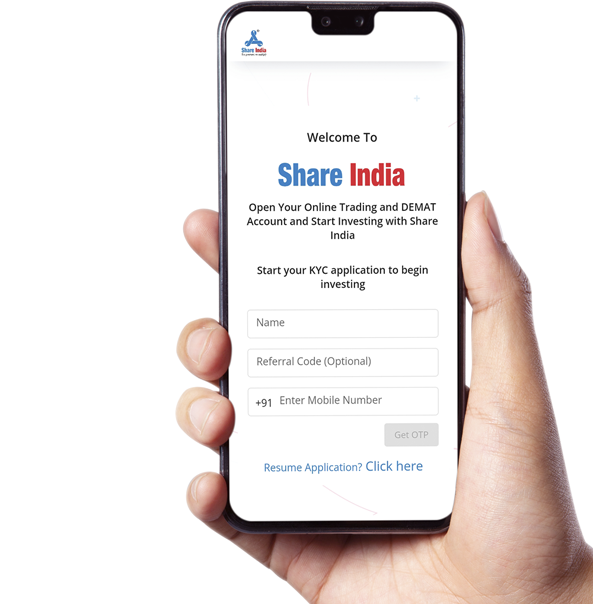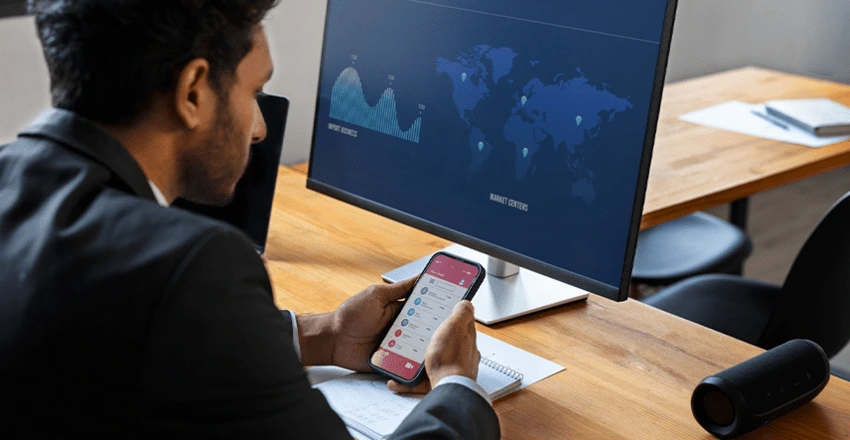VWAP: Meaning, Importance & How to Calculate
A VWAP is an abbreviation for the term ‘Volume-Weighted Average Price’ which is basically a technical indicator mainly used in intraday charts that resets at the start of every new trading session. In simple words, it is a trading benchmark that represents the average price of a financial security based on factors like volume and price of a security.

What is VWAP?
The VWAP indicator is used in different cases, but most often it is used in the intraday chart where time frames are set on a minutes, seconds or hourly basis. You can add the VWAP indicator to a streaming chart, and the calculation will be automatically shown in the chart. You can assume a 5-minute chart for the VWAP indicator.
To find the VWAP, you need to add the high, low, and close price, then divide by three, multiply this volume for that period, and add the result in the spreadsheet, under the volume column PV. After that, you need to divide PV by the volume for that period. You will get the VWAP. To maintain the VWAP throughout the day, you can continue to add the PV value from each period to the previous value. And then divide this total by the total volume at that point.
The goal of a volume-weighted average price is to compare the current price of a stock and give traders a benchmark to decide to enter and exit the price of trade.
Importance of Volume Weighted Average Price

The VWAP tells us about the real average price of the stock. This indicator is like the moving average, which works on historical data and makes the decision process easier in intraday trading. A VWAP is a popular tool among investors. Some of the advantages of VWAP are as follows:
- This indicator is better than the moving average
- It can indicate a bullish or bearish trend
- You can use this indicator for long and short positions
How to Calculate VWAP?
How to Calculate VWAP?
The calculation starts with the market opening bell and ends with the closing bell. As the VWAP is an intraday indicator, intraday data is used to calculate it.
Today, thanks to technological advancements, you can straight away add any popular technical indicator like the VWAP to a price chart with a few clicks. That said, the following section will get into the details of how to calculate the VWAP manually.
The mathematical formula to calculate the volume-weighted average price is: VWAP = Typical Price*Volume/Cumulative Volume
Example of VWAP
In the above equation, the typical price is the average of the high price, the low price, and the closing price. You can calculate it by using the formula: Typical Price (TP) = high price + low price + closing price/3
To get a better understanding of the calculation, let us look at an example. Let’s assume the high price = 20, low price = 10, and the average closing price = 15. Then, applying the typical price formula, we get: TP = 20+10+15/3 = 15
Then, multiply the TP by the volume, so let us assume the volume of the period is (V) = 20 Therefore, TP*V = 300
Cumulative volume for the stock, which in this case, let us assume is = 75 So, VWAP = TP*V/CV = 300/75 = 4
One can calculate the VWAP for every period, which will result in the formation of a VWAP curve on the price chart.
How to Use VWAP?
Different types of traders use VWAP in various ways. For example, they may use the VWAP as a trend confirmation tool. A trader using the VWAP as a trend confirmation tool could use it to take trading positions. So, if the price below the VWAP cuts above it, the trader could take long positions. On the other hand, if the price above the VWAP cuts below it the trader could go short. Institutions like insurance companies, mutual funds, and hedge funds may use the VWAP to make trades while impacting the market as little as possible.
Difference between VWAP and a Moving Average
Now, coming to the undressed elephant in the room—how is the VWAP different from a simple moving average? Both indicators, when plotted on a chart, may appear to be similar. However, both are technically quite different. Volume is an integral variable used to calculate the VWAP. On the other hand, the moving average does not consider the volume traded, and incorporates only the price over a certain period. As VWAP also accounts for the volume traded, inventors can take more educated trading positions.
Learn, Apply, Earn, Repeat – Make the Most of Our Latest Blogs
 15 Dec / 23
15 Dec / 23Beginner’s Guide to Currency Trading: How to Trade Currency in India
Currency trading, also known as foreign exchange or foreign exchange trading, involves buying and selling currencies from different countries with a view to making a profit. The United States dollar is the most widely traded currency in India, and the other currencies traded are the Euro, Japanese Yen, and British pound.
 15 Dec / 23
15 Dec / 23Comprehensive Guide for Mutual Fund Distributors and Agents in India
Good understanding and awareness are required to invest in mutual funds. Nowadays, all information about a fund is available on the Internet, so investors can compare various funds before starting to invest. However, the mutual fund agent plays a significant role when considering all the facts. Agents have a significant role to play in developing the mutual fund industry in India.
 15 Dec / 23
15 Dec / 23A Definitive Guide to Becoming a Franchise Broker in India
In India, becoming a franchise broker is more than just a fantasy. When you truly think about it, the process of becoming one is not that tough. Even though there are numerous challenges to conquer, being ready for the journey ahead is all that is necessary. In India, aspirant business owners and franchisors may commonly wonder: what is franchise broker, and how can I become one? What steps should I take to apply for a franchise? Whenever someone tries to realise their lifelong dream of being a franchise broker, these are some of the questions that always cross their minds.